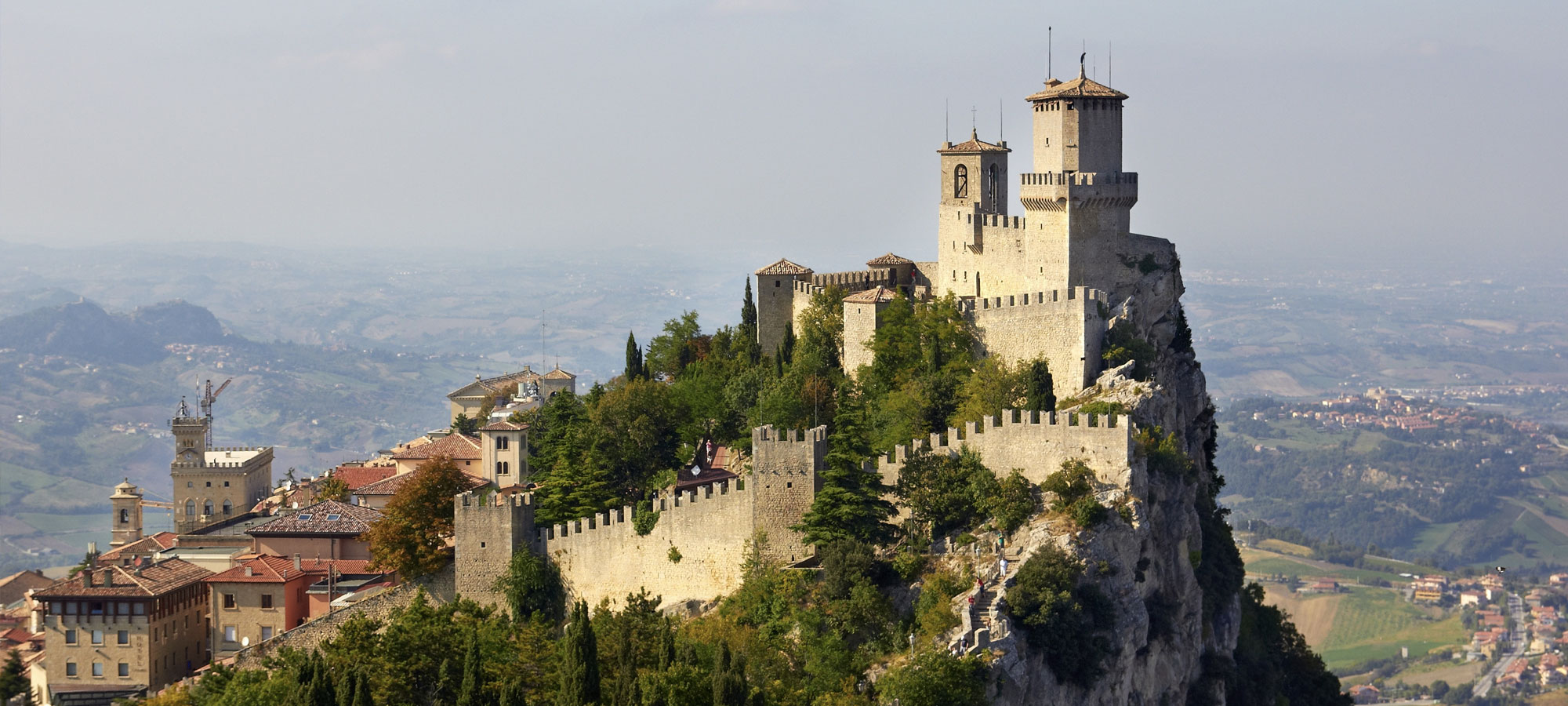About San Marino
San Marino is one of the world’s oldest republics and the only surviving Italian city-state, representing an important stage in the development of democratic models in Europe and worldwide. The tangible expressions of this long continuity as the capital of the Republic, its unchanged geo-political context and juridical and institutional functions, is found in the strategic position on the top of Mount Titano, the historic urban layout, urban spaces and many public monuments. San Marino has a widely recognised iconic status as a symbol of a free city-state, illustrated in political debate, literature and arts through the centuries. The defensive walls and the historic centre have undergone changes over time that include intensive restoration and reconstruction between the end of the 19th century and the first decades of the 20th century, a process that can be considered to be part of the history of the property and reflects changing approaches to conservation and presentation of heritage over time.
San Marino and Mount Titano are an exceptional testimony of the establishment of a representative democracy based on civic autonomy and self-governance, with a unique, uninterrupted continuity as the capital of an independent republic since the 13th century. San Marino is an exceptional testimony to a living cultural tradition that has persisted over the last seven hundred years.
The Historic Centre of San Marino on Mount Titano includes all the elements which constituted the foundations of this identity and during the medieval period of the Italian city-states. Many elements of the historic centre have been preserved or, if renewed, form part of a long tradition. The interventions carried out during the 20th century could be seen as affecting the integrity, but are also a part of the history of the property. There is a high degree of authenticity of the location and setting of the city of San Marino. With regard to functions and uses, there is a continuity related to the role of the historic city as capital of the small state. Restoration and reconstruction works carried out under the direction of Gino Zani may be considered as a part of the history of the property and an application of the theoretical principles stemming from the Romantic restoration movement. In this case, the idea of the “medievalisation” of the historic centre can be considered as an expression of national identity through the search for an idealised image of the historic centre.
The protection of the property is adequate, although there are a considerable number of legal protective instruments and more specific legal instruments regarding protection of the built heritage and of the surrounding landscape are required. The historic centre has not been subject to major interventions after the 1930s and the public monuments and open spaces are in a good state of conservation.
View all timetables to and from San Marino
Shuttle bus transfer to KEYENERGY 2025
28 January 2025
Official Shuttle & Bus transfer to SIGEP 2025
28 November 2024
Shuttle bus transfer to ECOMONDO 2024
30 October 2024
